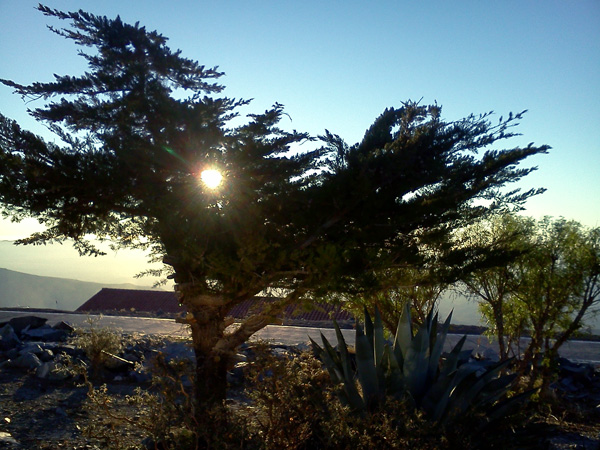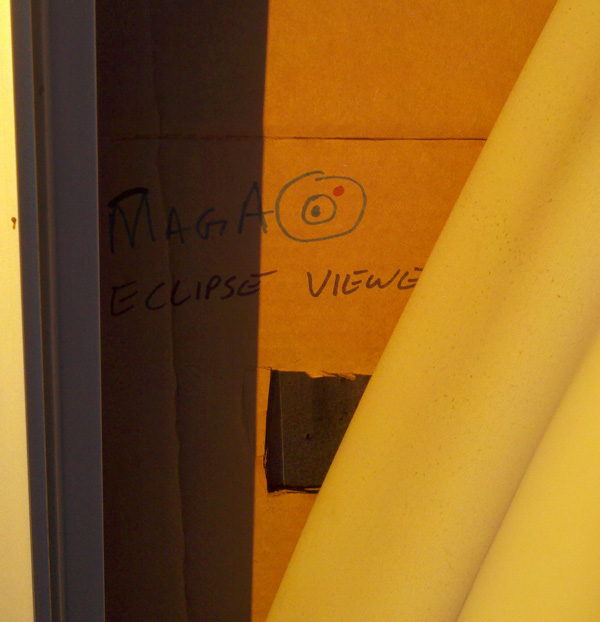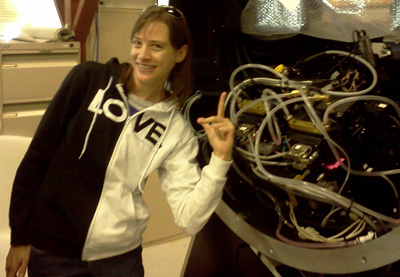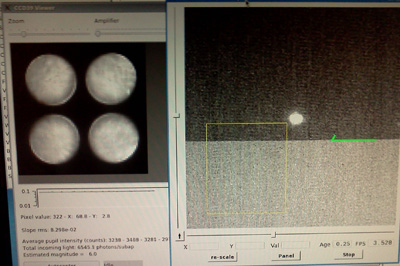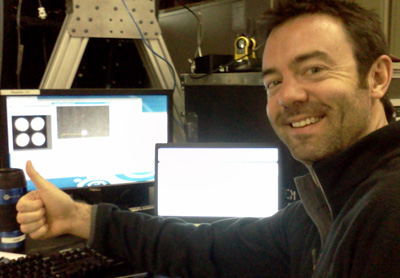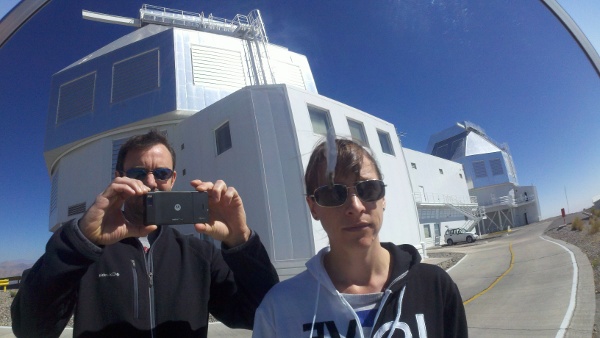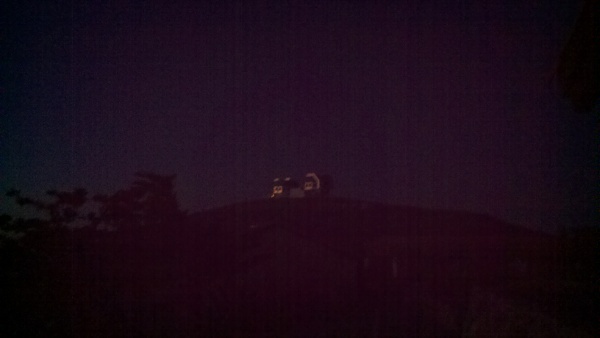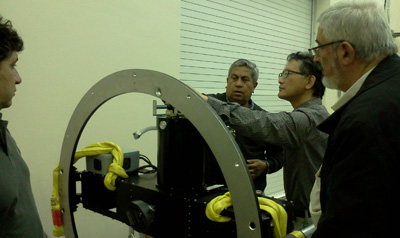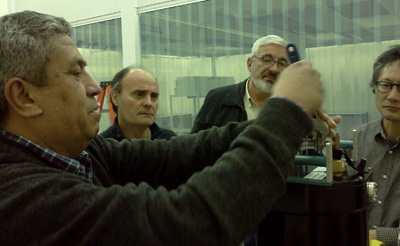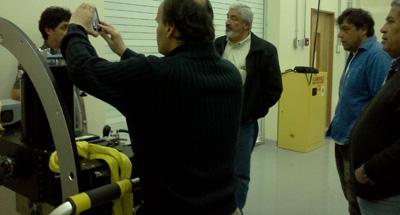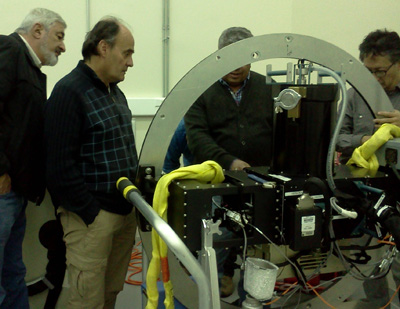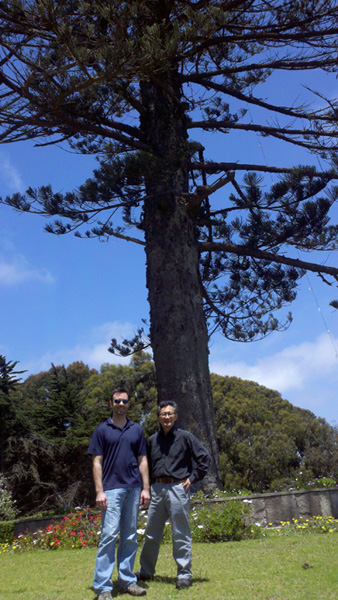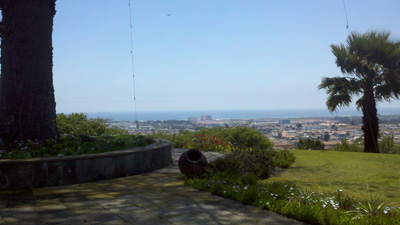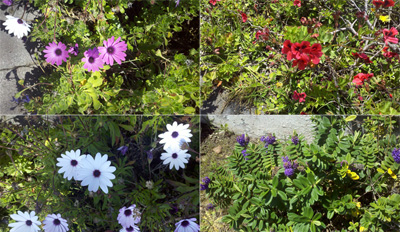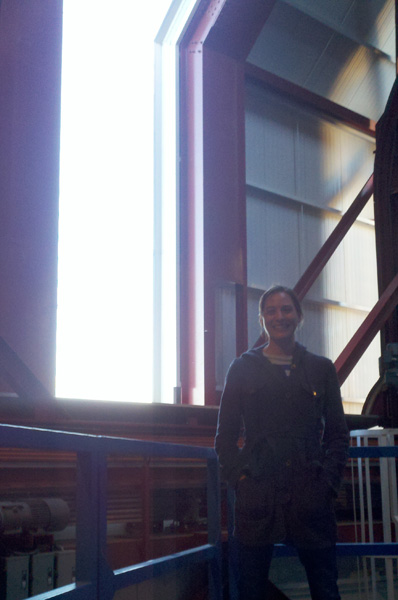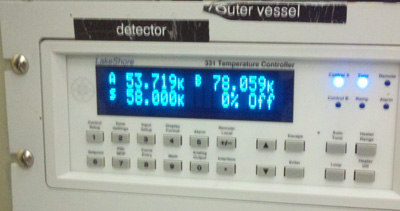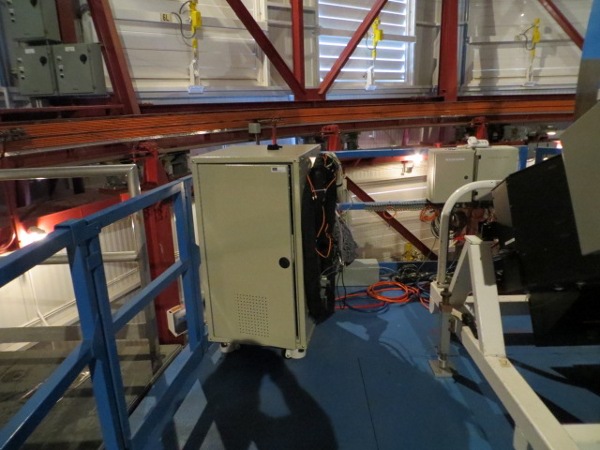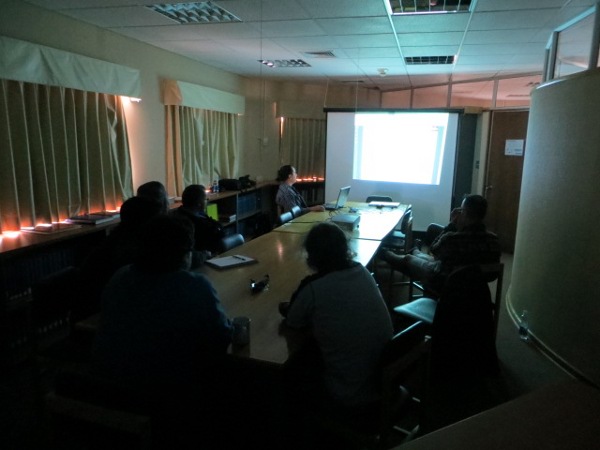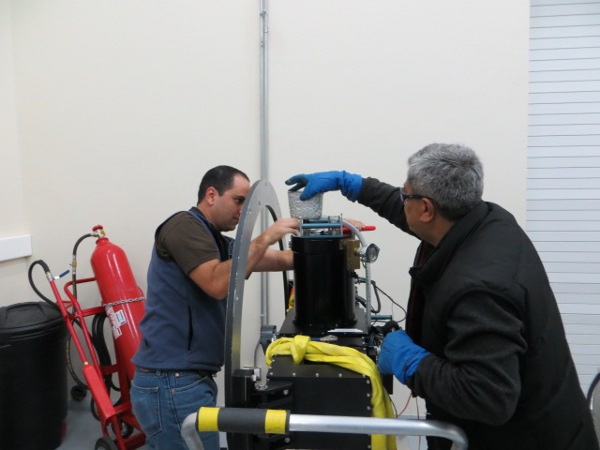The MagAO project put together an instrument on a shoestring budget from borrowed parts, to observe one of Nature’s most beautiful spectacles:
The solar eclipse!
We built a pinhole camera using an obsolete cable bulkhead, an authentic piece of MagAO hardware. We call it the MagAO Solar Eclipse Viewer. You can see the cable bulkhead below, in this photo of the PI and Instrument Scientist who did all the planning, design, and prep work with the hardware.
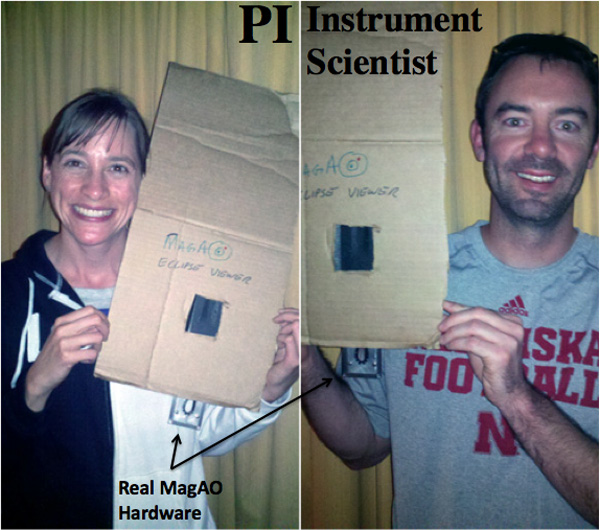
The instrument passed internal Feasibility (FDR)/Conceptual (CoDR), Preliminary (PDR), and Critical Design Reviews (CDR) this afternoon. There was no Pre-Ship Review (PSR) because we hand-carried the instrument from the Aux building to the dining hall. Integration and Testing (I&T) was completed in the afternoon at the Aux building by the PI and Instrument Scientist.
The commissioning and observing run began immediately after everyone finished eating a delicious dinner together in the LCO dining room.
Software and operations were provided by Tyson Hare. He first upgraded the detector from a wall to a sheet of paper, and then commissioned the instrument outside…
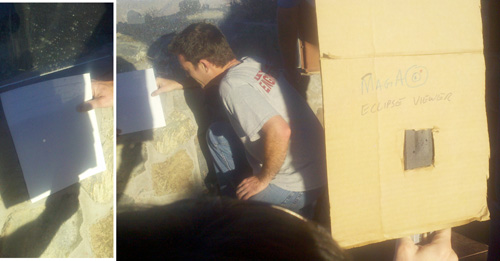
…then took it inside to the LCO dining room, where the curtains could be drawn to reduce the ambient “dome” light.
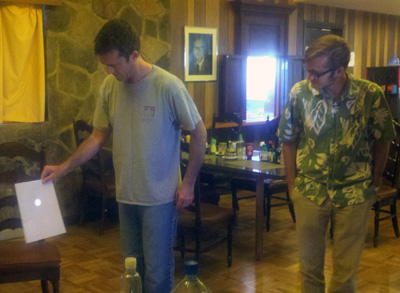
Here is Tyson operating the MagAO Solar Eclipse Viewer detector:
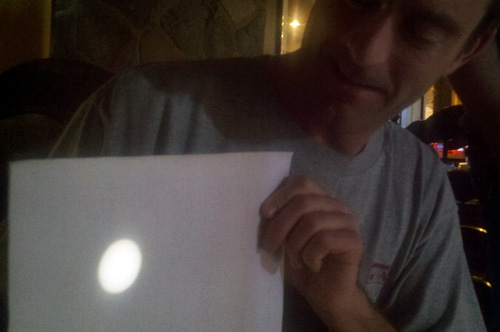
Laird Close operated the pinhole camera:
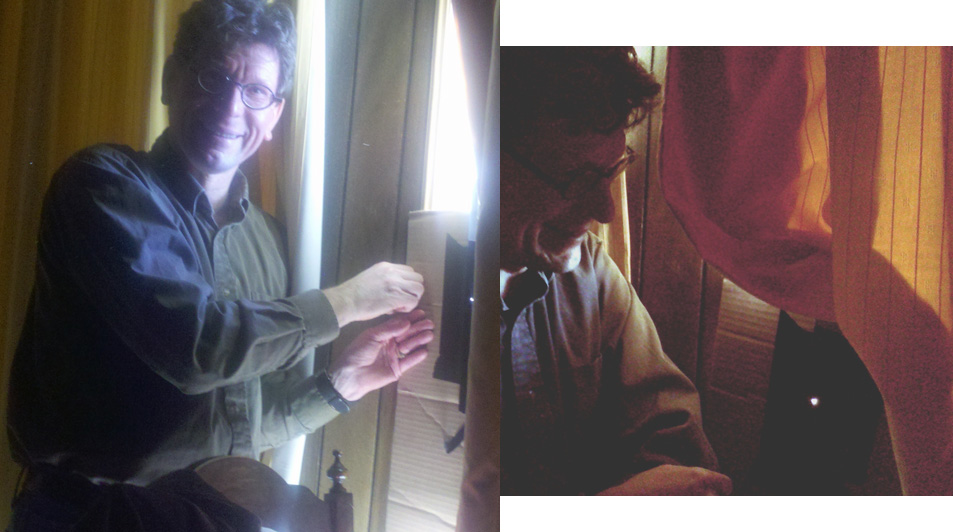
We simulated the eclipse with a 100-peso coin, to test our optical design and alignment:
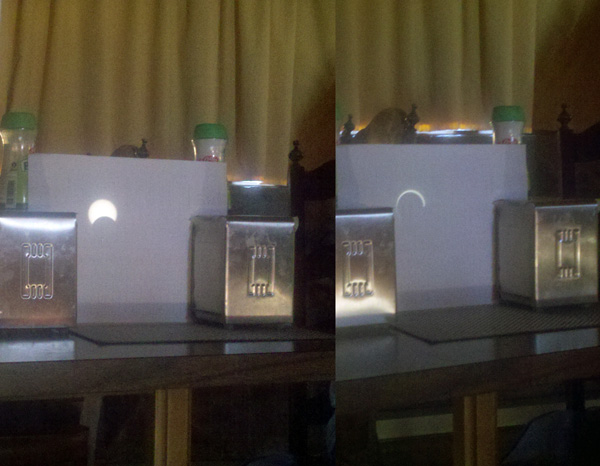
A lot of the LCO staff and other LCO observers joined in on the fun!
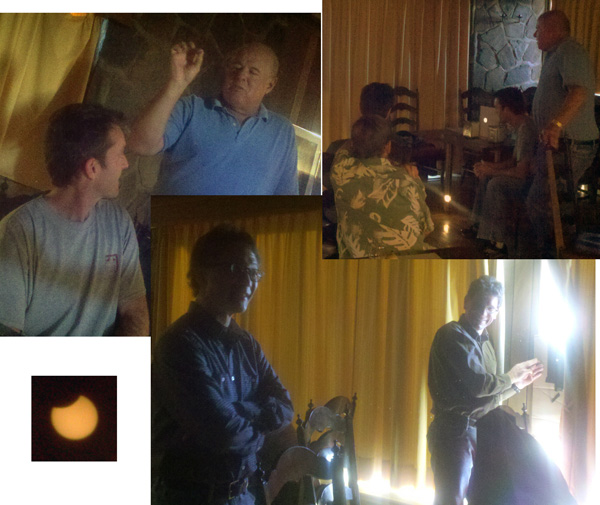
Here we show the entire instrument and overlay the light path:
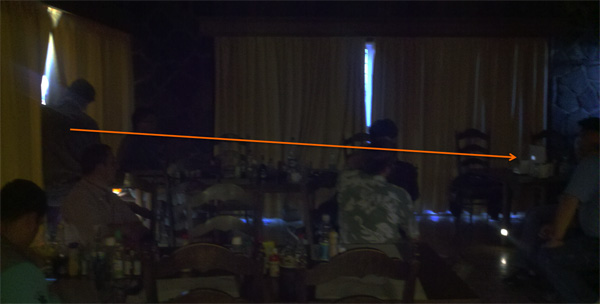
It was only a grazing or nibbler eclipse at LCO, and here are some of the best images we got:
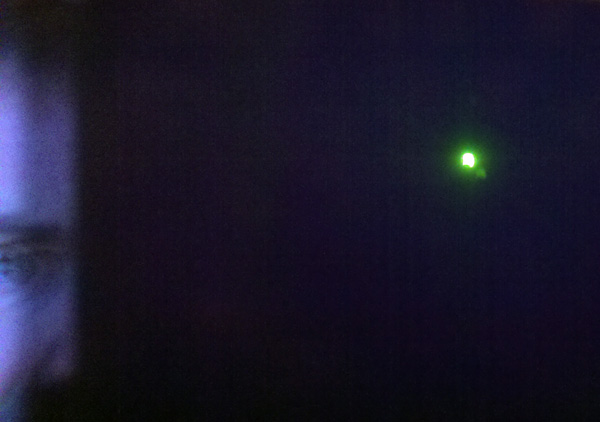
It was a lot of fun, and we hope you enjoyed the first on-sky results by the MagAO project!
